
Centre of Jaina Studies Newsletter: SOAS - University of London
A selection of illustrated Śvetāmbara Jain manuscript pages and paintings from Gujarat and Rajasthan, dating from the 15th to 19th centuries, is currently on display at the Victoria and Albert Museum in London. The display, comprised of holdings from the Museum, is part of the JAINpedia website project digitising Jain manuscripts in UK collections. The aim of the project is to make these delicate artefacts accessible to the public, while at the same time ensuring their conservation. As well as the forthcoming website, which will be a major resource on Jain manuscripts, all the V&A works can now be seen on the 'Search the Collections' pages of the Museum's website.
Many of the manuscripts in the V&A collection are richly illustrated, having been acquired as works of art. Among these is a nearly complete Uttarādhyayanasūtra manuscript of the mid-15th century. This relatively early example contains very fine illustrations. Lacking the lavish use of gold and costly ultramarine blue pigment which became common in the late 15th century, they have fine, clear lines and fresh, lively compositions. There are a small number of pages from dispersed Kalpasūtra manuscripts of the 15th century, and an almost complete Kalpasūtra manuscript of the late 15th to early 16th centuries, with illustrations in a slightly later style with blue and gold predominant. A complete cosmological Saṁgrahaṇī-sūtra manuscript dates from the 18th century, contrasting with a single folio of c.1630.
The display begins with a selection of pages from the Kalpasūtra manuscripts, illustrating episodes from the lives of the Jinas. The majority of illustrations on the V&A's Kalpasūtra folios deal with episodes in the lives of the Jinas, especially Mahāvīra. This display exhibits folios which depict these key episodes, such as the transfer of Mahāvīra's embryo and representations of the birth, renunciation, enlightenment, and Nirvāṇa of Jinas. (Figure 2) Although the compositions used in depictions of such events may be similar in different manuscripts, the contrasts in colour scheme, appearance of text, marginal decoration and so forth are striking in these examples. The distinctive stories of Neminātha abandoning his wedding feast on hearing the cries of the animals awaiting slaughter for the wedding feast and of Pārśvanātha rescuing Dharaṇendra from Kamaṭha's fire penance, and Dharaṇendra subsequently sheltering him from the storm, are shown in remarkably compact narrative images, along with an image of Indrabhūti Gautama.
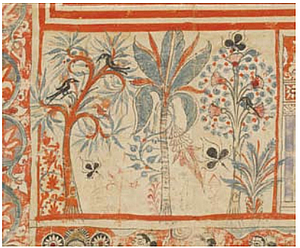
Figure 1. Jain victory banner (jayatra yantra) (detail) Opaque watercolour on cotton Gujarat, dated 1447 V&A IM.89-1936 © Victoria and Albert Museum, London
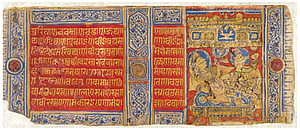
Figure 2. Folio from a Kalpasūtra manuscript showing the transfer of Mahāvīra's Embryo Opaque watercolour with gold on paper Gujarat, c. 1490 V&A IM.7-1931 © Victoria and Albert Museum, London
Three pages from the mid-15th century Uttarādhyayanasūtra are then shown. (Figure 3) Although the text is concerned fundamentally with rules for monks, it is often the accompanying stories that are selected as the subject for the illustrations. A fascinating scene shows Neminātha's brother, Rathanemi, in a cave with Rājīmati, to whom Neminātha had been betrothed before his renunciation and who had then become a nun. A loose scarfis the pictorial device revealing the nub of the story, in which Rājīmati, drenched by a storm, enters a cave and undresses, to be discovered by Rathanemi who has already in the past sought her love. Her sermon brings the story to a happy and suitably chaste conclusion, with Rathanemi's monastic duties reaffirmed. Another scene shows the story of King Sañjaya, who while hunting deer almost shot the Jain monk Gardabhāli by accident. Horrified by the near consequences of his violent actions, he converted to Jainism. Gardabhāli is shown in the lower register teaching the king. An illustration showing the rules of conduct for monks includes, beside a monk standing in the kāyotsarga posture, what appear to be scenes of torture with a person with their head in a bag and a charging elephant. This suggests the concept that the Jain monk who overcomes trials by men, gods and animals will achieve liberation. At the top of the picture is a crescent in which sits a Siddha, feted by two gods.
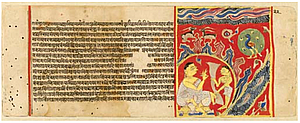
Figure 3. Folio from an Uttarādhyayanasūtra manuscript: The story of Rathanemi, brother of the Jina Neminātha Opaque watercolour on paper Cambay, Gujarat, about 1450 V&A IS.2-1972 folio 23r © Victoria and Albert Museum, London
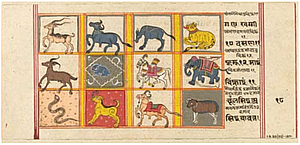
Figure 4. Folio from a Saṁgrahaṇīsūtra manuscript: Animals symbolising the twelve kalpas Opaque watercolour on paper Western India, 18th century V&A IS.35:20-1971 © Victoria and Albert Museum, London
Cosmological concepts are illustrated by pages from Saṁgrahaṇīsūtra manuscripts. A folio of circa 1630 in a provincial Mughal style provides an interesting contrast with pages from a manuscript of the 18th century in a less sophisticated but vivacious style. (Figure 4) Among these are a folio illustrating the distances between the planets and animal symbols of the vaimānikas, gods of the twelve kalpas or paradises. Two pages, each of which shows one half of an aḍhāīdvīpa diagram, are displayed together to show them as one complete painting, as they appear to have originally been painted. This can be compared with a far larger and accordingly more detailed aḍhāīdvīpa painting from Deshnok, displayed above them.
The exhibition also includes two 19th-century manuscript covers depicting the fourteen dreams of Queen Triśalā, mother of the 24th Jina, Mahāvīra. One cover is painted on card, while the other is embroidered, the painstaking decoration reflecting the reverence with which texts such as the Kalpasūtra are treated.
Among the paintings on display is a large jayatra yantra or victory banner, consecrated at Diwali in 1447 by Jinabhadrasūri, head of the Kharataragaccha chapter, and ranking among the oldest surviving Jain paintings on cloth. (Figure 1) Its central field contains the syllables and numerals appropriate to a yantra or esoteric diagram, while the borders, especially at the top and bottom, are filled with superbly delicate painting of deities and auspicious symbols.
Next to this is a large aḍhāīdvīpa painting showing the two and a half continents in the Jain universe where mortals dwell. (Figure 5) An inscription read by Professor Nalini Balbir, content director of JAINpedia, reveals the origins of the painting in Deshnok, Rajasthan, in 1844. The painting had been severely damaged at some point in its early history and is very fragile, but conservation work for this project has now enabled it to be stabilised and displayed, possibly for the first time in its history at the Museum.
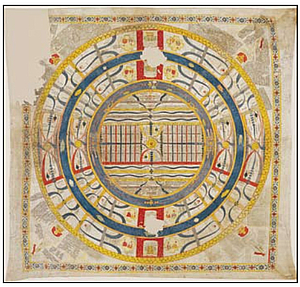
Figure 5. The mortal realms of the universe Painting on cotton Deshnok, Rajasthan, dated 1844 V&A 6565(IS) © Victoria and Albert Museum,London
In addition to this one, most of the paintings and manuscript pages in the collection needed to be conserved in preparation for digitisation and the handling that photography would entail. (Figure 6) Many of the manuscript folios had been seriously weakened by the corrosive effects of the pigment verdigris (copper acetate), which was used as a green pigment. Verdigris is highly corrosive and over time changes from a bright blue-green to brown. The deteriorated pigment is acidic in nature and causes widespread corrosion of paper which in many folios has lead to the loss of paper in both picture and text areas. Strengthening these deteriorated folios was an important part of the conservation treatment. Current research has indicated that fish gelatine (isinglass) is the best adhesive to use, as this appears to help stabilise the copper
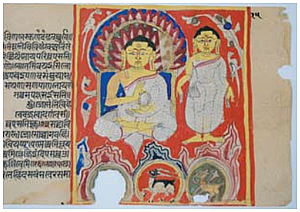
Figure 6. Folio from an Uttarādhyayanasūtra manuscript: The ideal monk (detail) With verdigris losses and insect damage Opaque watercolour on paper Cambay, Gujarat, about 1450 V&A IS.2-1972 folio 15r © Victoria and Albert Museum, London
However as Jainism specifically prohibits the use of animal products, it was necessary to find a synthetic alternative which would act as an adhesive. This suggested the use of a reactivated film of methyl cellulose adhesive, a synthetic water soluble polymer, to adhere small pieces of a very thin hand-made Japanese tissue to the surface of the degraded paper. Care was taken to use the very minimum amount of moisture during the procedure, as this could cause further deterioration of the acidic paint layer. This repair method allowed damaged areas to be secured.
Digitisation has been an integral part of the conservation process. This will allow the folios to be viewed and studied without the need to handle the fragile originals. A series of educational events at the V&A will accompany the display, jointly organised by the JAINpedia project and the V&A. These have already included a very popular weekend of events to mark Diwali, including creation of a rangoli floor design showing six of the dreams of Triśalā, by Shobhna and Pratima Haria. The display was made possible by generous support from the Institute of Jainology, the Heritage Lottery Fund, the Oshwal Association of the U.K., the V&A Jain Art Fund and the Nehru Trust for the Indian Collections at the V&A.
Nick Barnard is Curator, South Asia, Victoria and Albert Museum, London.
Mike Wheeler is Senior Paper Conservator, Victoria and Albert Museum, London.
 Mike Wheeler
Mike Wheeler
 Nick Barnard
Nick Barnard